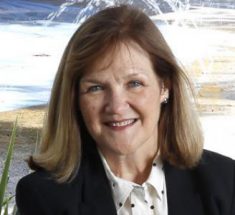
Partnering with universities could help local government meet the challenge of providing urban green space into the future, says researcher.
Gathering objective insights and analysis to project future needs are among the challenges confronting councils in the provision of sufficient access to parks, gardens and greenways.
But a leading landscape architect and expert on urban parks and open space says that greater collaboration with universities could assist local government with future planning, community engagement and landscape performance management.

Linda Corkery, an associate professor in the Faculty of Built Environment at UNSW, says that universities can provide independent, objective assessments for councils.
“What universities do well is research and looking at the big picture, working with councils to gather the data to keep them informed. Sometimes having a third party that is a bit removed from the community can be more objective, working with engagement issues,” she told Government News.
During her presentation at a LGNSW Planning Event Series event earlier this week Dr Corkery heard from local government professionals that funding and a lack of data were among the key challenges in delivering urban green space.
“One of the big concerns from people in local government is resources. It’s not just the funding to deliver a new park, cycleway or sportsfield, it’s the ongoing cost of maintaining it,” she says.
“The other kinds of resource they need is data – what do we know about who lives in our area and who is going to be living here in the next 20 years, and how do we plan and project ahead for that.”
Dr Corkery, whose faculty advises local governments and is currently working with Georges River Council on a project exploring the social use of smart cities, says universities can bring “scope and perspective” to councils’ green space planning.
Conducting post-occupancy evaluations, anticipating the impact of increased density on urban green space, planning new green space and integrating smart technologies are among the ways universities can assist councils, she said.
“We’re also now getting very involved in city analytics, looking at big data and making sense of that. And we can involve our students in that research, and they’re the people who will be going out to work in local and state governments in a few years’ time.”
In terms of the factors critical to successfully providing green space, Dr Corkery says recent research shows governance tools, such as policies and strategies, political and council leadership and resources such as funding and expertise are all essential.
Governance structures, such as involving community groups or not-for-profits, and a supportive organisational culture are also critical factors identified in research, she says.
“There are some wonderful major urban redevelopment projects in the US that have evolved out of the work of grassroots organisations that often do crowd sourcing and kick-start the funding,” she says.
Dr Corkery argues that it’s important to consider green open spaces for the multiple benefits they deliver, beyond recreation and aesthetic.
“It’s about essential green infrastructure services, which have to be understood as being critical for how we’re going to meet the challenges of climate change,” she says.
Dr Corkery points to the rain event in Sydney on Wednesday that caused flash flooding and major impacts on public transport.
“Think how things might have gone differently if we’d had somewhat less impermeable surface coverage in the city,” she says.
Among the urban green spaces Dr Corkery highlighted in her presentation were the Sydney Park Water Re-use Project, as an example of an open space providing multiple benefits, the Olympic Structure Park in Seattle as an example of green space integrated into innovative infrastructure, and the Buffalo Bayou Park in Houston, which created parklands under roadways.
Comment below to have your say on this story.
If you have a news story or tip-off, get in touch at editorial@governmentnews.com.au.
Sign up to the Government News newsletter.
I am sure that this terrific new research article by AILA member Chris Boulton is among the ‘new research’ discussed in this article. Well worth reading the insights that Chris provides on the factors affecting green space provision. As a former parks manager she has the real world experience to ‘ground-truth’ her findings: https://www.sciencedirect.com/science/article/pii/S0169204618304341 Great stuff…